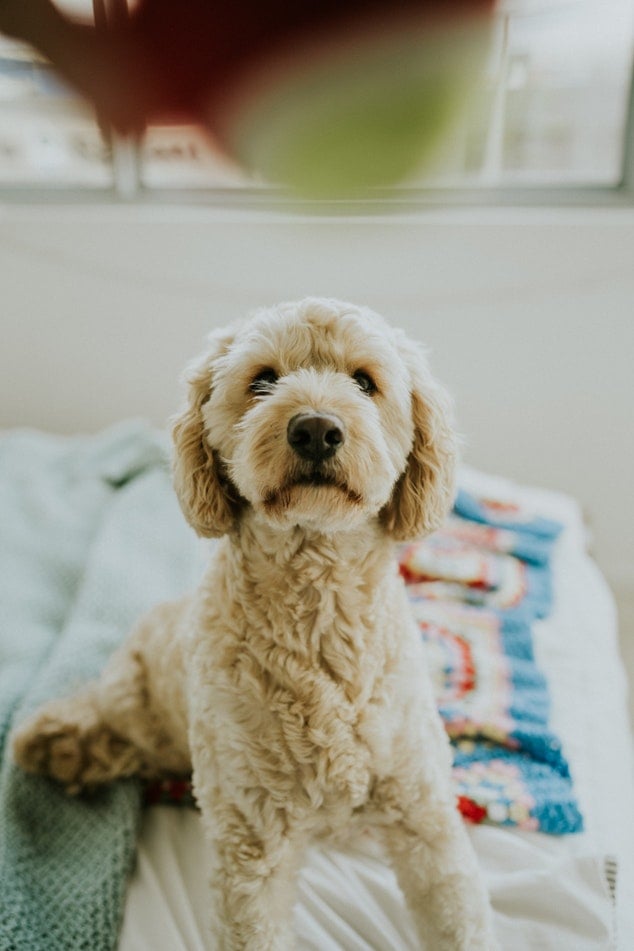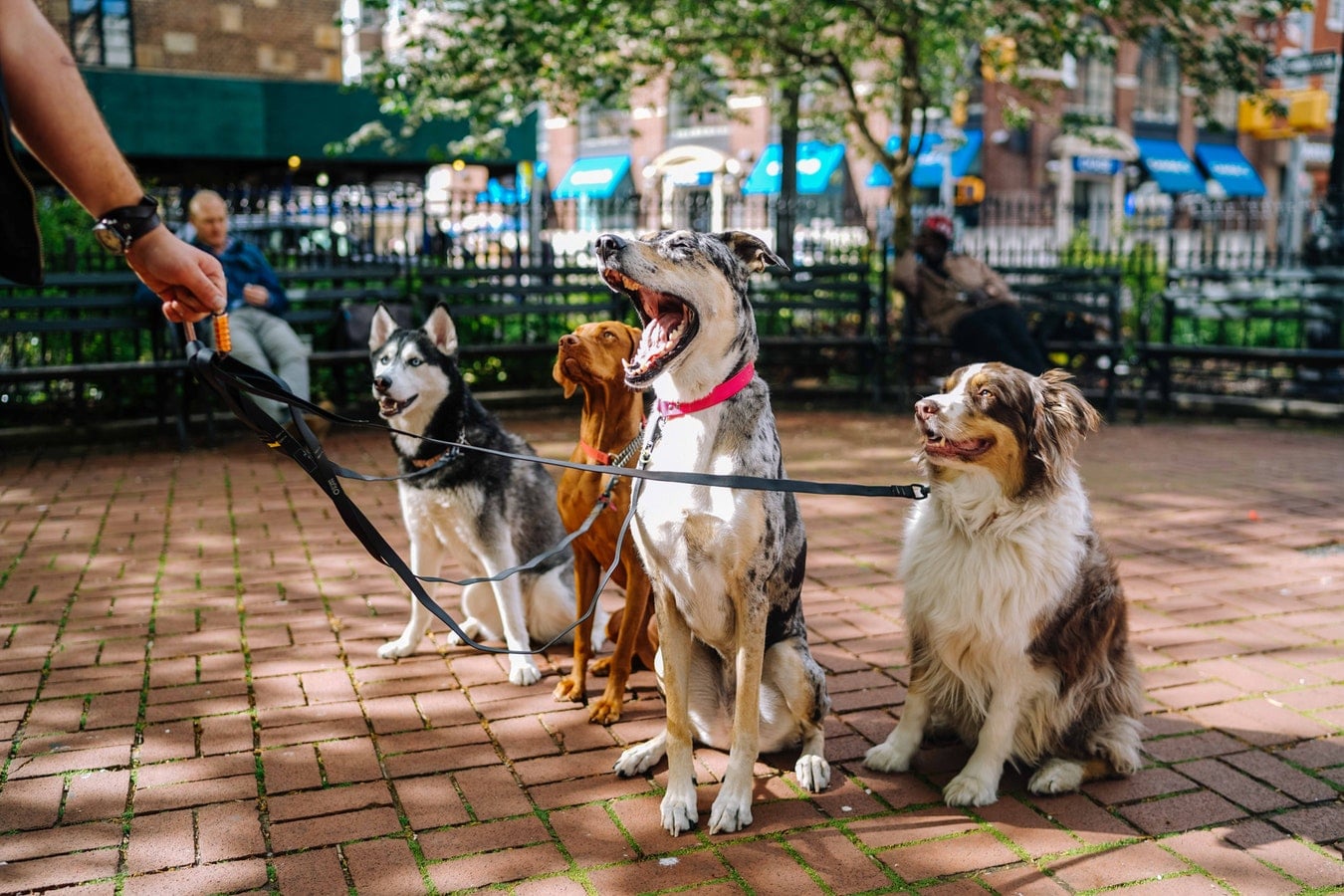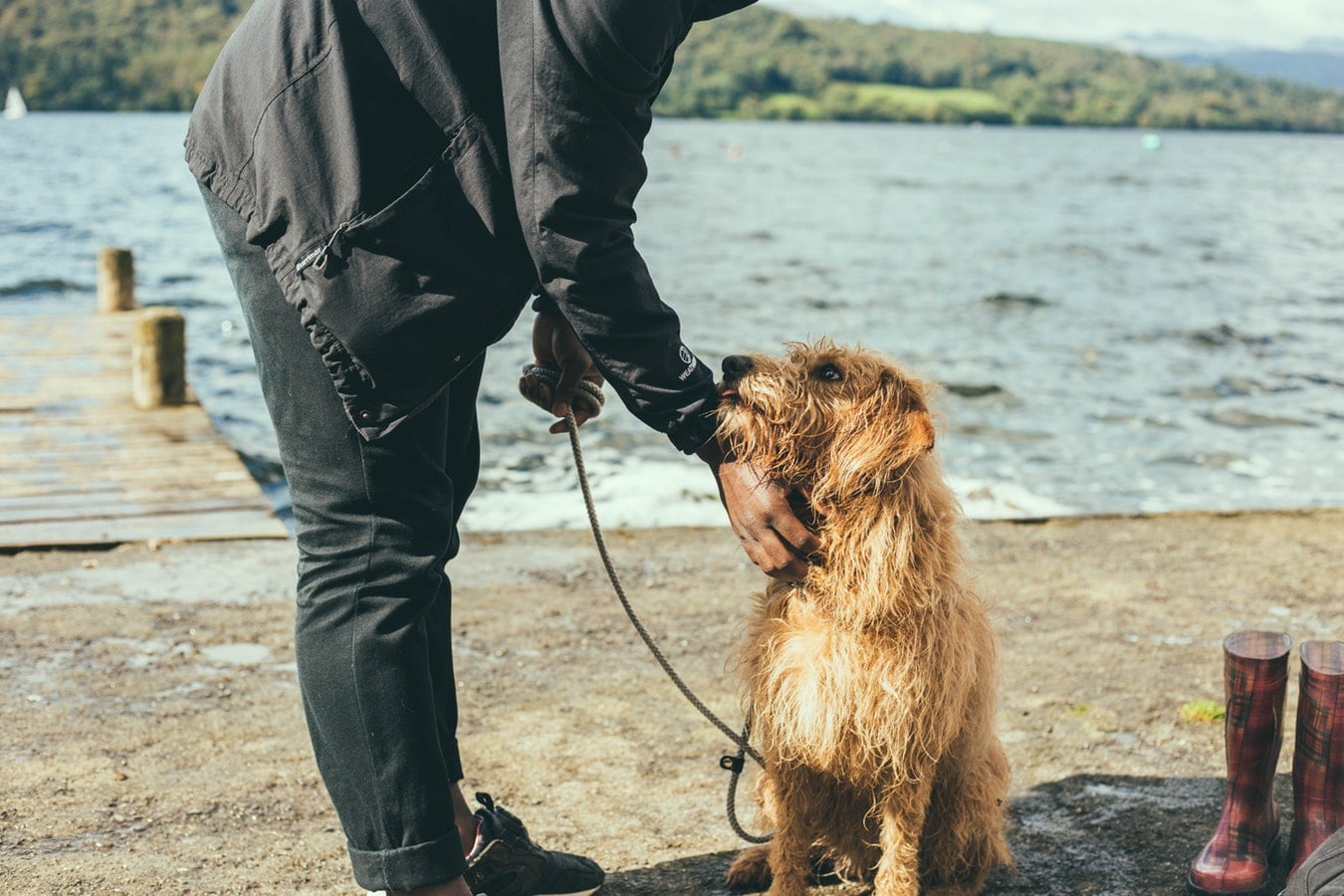Over the last few weeks, we talked about how dogs learn and we took a look at going punishment-free when training, now it’s time to start with the 6 basic commands make both you and your dog’s life better.
We’ve got to start at the basics because simply put, they are the ones you’ll most commonly need. In fact, knowing these commands can also help your dog to learn more complicated ones in the future, apart from setting the stage of how you and your dog will go about in your training sessions.
Today, we’re going to look at 6 basic training commands as well as how you could teach them to your dog. We’re excited to be going through this with you, and the upcoming weeks also mark more posts on other training commands that will come in handy.
But for today, we’ll just be focusing on these 6. Each training method will stay true to the Savory Prime mark and remain positive and rewards-based.
Training Command 1: Sit
Possibly the most basic of all commands, each dog should know how to respond accordingly when told to “Sit”. Also, it’s one of the easiest to teach, so that’s convenient for both you and your dog to start off with something easy.
Start off by putting a treat in front of your dog’s nose. No matter how persistent she is, don’t allow your dog to get the treat until it’s the right time!
Move your hand up, and your dog tilting her head to follow the treat should get her bottom half to lower to the ground automatically.
Once your dog’s sitting, say “Sit” in a clear voice and give her the treat (and some praises and affection too).
Repeat a few times each day until your dog has mastered it. Then, you can use it in scenarios where you want your dog to settle and calm down, like before a meal or when she catches sight of her leash.
Training Command 2: Down
This one is for getting your dog into a submissive or relaxed position, which is important for when you have to go to a place where your dog will tend to become too hyped to listen to your commands.
Tell your dog to sit. Show her the treat and lower it to the floor while pulling it closer to you to entice your dog to slide down from her sitting position. Don’t allow your dog to lunge at the treat prematurely by saying “No” in a strict voice (but don’t yell it).
Once your dog’s belly is flat on the ground, reward and praise.
There’s another method to teach your dog this command called the ‘Under-The-Leg method’ albeit it’s a little more complicated. However, if the food lure doesn’t work for your dog, you can always try that out.
Repeat regularly until your dog follows the command even with no treat
Training Command 3: Stay
Once your dog knows how to sit and go down on command without pause, you can begin teaching her how to stay. This can be quite tricky if your dog is the hyper sort.
Tell your dog to sit or stay down. Once she’s settled, hold up your hand in front of her nose with the palm up and say “Stay”.
If your dog holds the position, reward her. After a while, begin taking a step backward to test if your dog follows and reward if your dog follows the “Stay” command, even if just for a split second.
Then, gradually increase the amount of steps you take before rewarding. This will ensure that your dog will learn how to stay seated for increasing amounts of time.
Like with sitting, practice regularly until your dog has the hang of it. If your dog can’t keep still for too long, don’t feel frustrated, as it’s normal especially for dogs with high energy levels. Reward the tiniest improvements, until such time that you have built up your dog’s staying power.
Training Command 4: Come
This one is necessary if you want your dog to step away from something and heed your calls. This is especially useful if your dog tends to run away from you to explore on her own or just generally doesn’t come when called.
Put on a collar and leash on your dog, one of the instances when you may have to tell your dog to “Come” is when you’re out on a walk and you accidentally let go of the leash. Plus, you’re going to need the leash to drive the point of this command at home.
Go down to your dog’s level and say “Come” while giving the leash a gentle tug or pull to indicate that you want your dog to go closer to you.
Once your dog reaches you, reward her.
Another way to do this one without the collar and leash is to go to a closed in area like a room or a fenced yard. Ask your dog to sit, stay, and then walk away from her.
Call out your dog’s name and say “Come” in an inviting voice, while enticing her to go to you with a treat in your hand. Again, give the reward once your dog reaches you.
If your dog gets distracted on the way and starts to wander off, simply say “No” and wait until she refocuses back to you.
Once your dog knows the command and how to properly respond to it, start practicing it in areas where there could be more distractions and temptations lying around.
Training Command 5: Leave It
Dogs like to explore, and sometimes what they bound off to sniff or chew at isn’t always very safe for them. Teaching them the command “Leave it” will ensure that you can always tell them to leave something potentially harmful alone.
It can also be used in conjunction with “Come” as you can call them back to you once they leave the thing alone.
The training for this one’s going to be a bit trickier, as you’ll have to teach your dog to ignore something enticing in exchange for something better.
Start off with two treats in each hand, one that’s better quality than the other. Show your dog the hand with the less tasty treat, then close that hand into a fist. Say “Leave it” and ignore your dog’s attempts to mouth, bite, sniff, or lick your hand.
Once your dog stops any attempts to get that treat, present her with the better treat that’s in your other hand and reward it to her along with some praise. Repeat this until your dog associates the command with ceasing the attempts to get the first treat.
After your dog consistently follows the command after some repetition, you can level up the training by setting the less tasty treat on the floor and covering it with your palm.
If your dog still responds properly to “Leave it”, start increasing the temptation by making the less tasty treat more accessible by lifting up the hand that’s covering it a few inches at a time, keeping the training up and only rewarding and praising if your dog consistently leaves that treat alone in favor of your better tasting reward.
Over time, the command will take hold no matter how tempting the treat is, like a steak on the dining table. Also, note how the video shows that commands can be stacked up over time for more effective behavioral modification!
Training Command 6: Off
Not to be confused with “Down”, this command is for getting your dog to get off people and surfaces they jump on, like the dining room chair. Overexcited dogs can jump up on humans, especially if they’re just meeting them, training your dog to follow the “Off” command will remind them to keep all of their feet on the ground.
The training for this one would be a little different from the other basic commands we’ve discussed so far, as you’ll have to wait until your dog’s actually doing the behavior you’re trying to correct (like jumping up the sofa) before you can start training them the word “Off”.
So you catch your dog on one of the chairs at the dining table, front paws already up on the table (a scenario I’ve had the misfortune of seeing a few times in our own house, I still miss those pancakes…). Say “Off” and lure your dog away with a treat in your hand.
The moment all of your dog’s paws are on the ground, give her the reward.
The same thing goes if you find your dog on your bed, the sofa, with paws up the counter, and so on.
It would be handy to keep treats in strategic places so you won’t have to run off to get them and miss the opportunity to teach your dog the command in the process. Just make sure that those strategic places aren’t your dog’s next targets.

Recent Pet Posts
Blog Categories
Product categories
- Accessories (9)
- Chicken & Veggie Wraps (8)
- Grillers Jerky Tenders (4)
- Jerky Treats (10)
- Made in the USA (9)
- Non-Rawhide Treats (28)
- Beggar Bone (11)
- Bully Sticks (4)
- Butcher Bone (4)
- Cod Skin Fish Treats (3)
- Pork Skin Twists (2)
- Pressed Rawhide Bones & Rolls (16)
- Bones & Rolls (6)
- Pressed Rawhide Bulk (6)
- Twist Sticks (4)
- Savory Munchies (13)
- Supreme Bones & Rolls (48)
- American Rawhide Bulk (16)
- Rawhide Bones (14)
- Rawhide Chips (6)
- Rawhide Rolls & Sticks (12)
- Uncategorized (8)




4 Comments. Leave new
Excellent and easy training.
This is very helpful! I have a dog at home it’s a boy and he needs lots of help….but it’s a foster and we need him to be good.
I have tried most everything and I cannot get to stop barking when someone walks by our house with a dog or not. Any ideas?
To solve your dog’s unnecessary barking, you need to find out the cause of the barking to start with. Dogs bark when people come to the house, both out of enjoyment, or to make them go away. Their barking could also be territorial. Give your dog something to do like a task, treat, or puzzle toy when he hears the sound. Habits are hard to break, but if you are consistent, his pattern of behavior will change to something more advantageous.